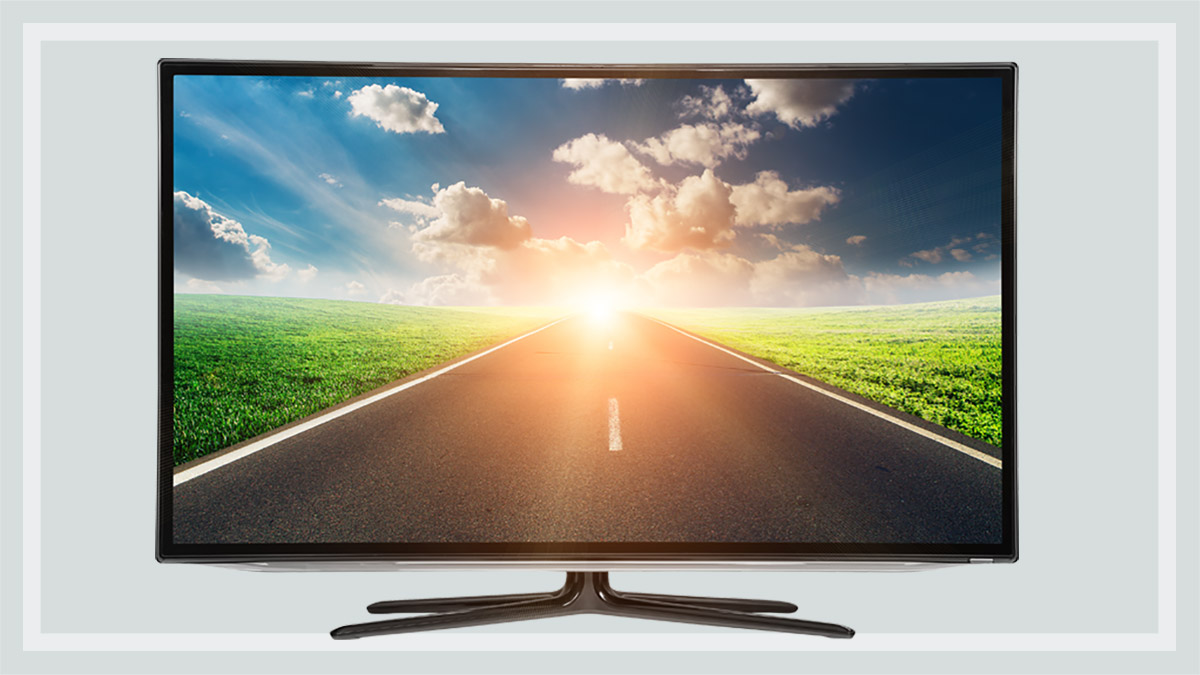Get our independent lab tests, expert reviews and honest advice.
How to cast smartphone content to a TV
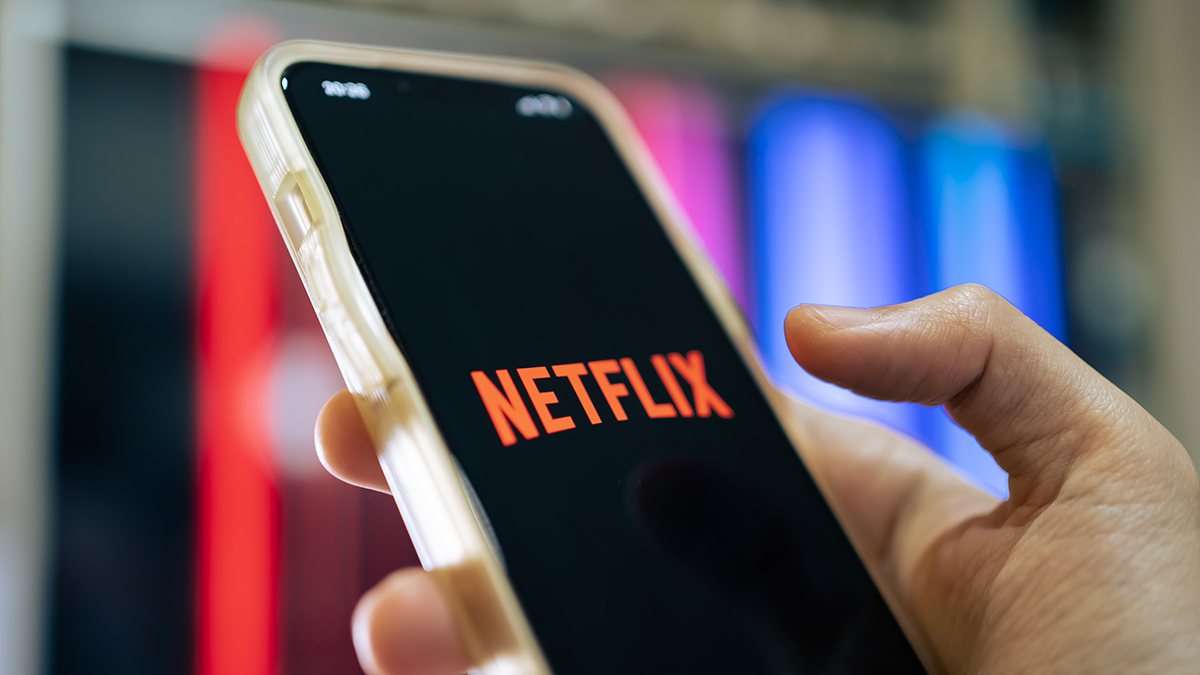
Your smartphone is likely one of the most versatile and entertaining pieces of technology you own, but it’s far from the best way to enjoy your favourite movies and shows.
On this page:
- Types of casting and mirroring
- How does mirroring work?
- How to mirror your devices
- How does casting work?
- How to cast to a TV
- How does AirPlay work?
- How to use AirPlay
- Other types of casting
Thankfully you can cast videos, photos and music wirelessly to your TV via your home Wi-Fi network or directly through your phone or tablet. There are a few casting protocols available but these can vary depending on whether you’re an Android or iOS user.
Types of casting and mirroring
Although distinct, these three terms are often used interchangeably.
- Mirroring: Describes apps and operating system tools that duplicate your smartphone screen on another device.
- Casting: Google’s proprietary streaming protocol that links apps on compatible devices. It’s broadly supported across Android and iOS.
- AirPlay: Apple’s proprietary streaming protocol only available on its first-party devices.
How does mirroring work?
Mirroring is the basic option that simply shows an exact duplicate – visuals and/or sound – of what’s on your device. How mirroring is handled depends on which protocol you’re using, which device you’re broadcasting from, and which smart TV or other device is acting as the receiver.
What are the pros and cons?
The main advantage of mirroring is that you only need to use a single app to replicate your smartphone – for example, you don’t need to worry about whether your TV has YouTube or Netflix in the app store. But this does mean the original device is still doing all the processing and its screen usually needs to stay on, which can drain the battery.
Unlike casting, mirroring doesn’t really optimise content for a TV screen. This means you may have to be satisfied with standard or high-definition video (rather than 4K UHD) delivered in a portrait shape on your landscape-shaped TV.
How to mirror your devices
There are a bunch of third-party mirroring apps available but support is inconsistent. Below are the easiest ways to mirror your devices.
Android
Google has taken a slightly convoluted approach, as you can use the casting protocol to mirror your phone. First, make sure your devices are on the same Wi-Fi network then open the Google Home app, find a device that supports mirroring, such as a TV, then tap to open. Next, select Cast entire screen followed by Cast screen.
To disconnect, return to the device menu in Google Home and tap Stop mirroring.
iOS
Apple uses AirPlay to mirror screens across compatible devices. This is covered in more detail below (see How does AirPlay work?).
Miracast
This was the precursor to casting for Android and iOS devices, but support for Miracast has waned over the last few years. Unlike casting, Miracast uses your phone, tablet or Wi-Fi-supported PC to create a Wi-Fi-direct connection between devices without going via your router.
Most TV and streaming dongle manufacturers have transitioned to casting or AirPlay, but some devices, such as Windows laptops, still support it. You’ll need to install the free app on your phone (a paid version is available) which still receives semi-regular updates. Just make sure that you’re downloading the official version, as there are many imitators out there.
It does feel like Miracast is en route to retirement. If you want to mirror your device to another one that doesn’t support casting or AirPlay, it’s best to look for an official app from your TV’s manufacturer, or a third-party option.
TV manufacturer apps
A few TV manufacturers have proprietary software in the operating system, or mirroring apps for iOS and Android. These are designed to identify devices from the same brand on your network, which can make mirroring easier if casting or AirPlay aren’t supported.
You will need to install the app or give your phone permission to communicate with the TV. Steps vary between brands and models so look up how to ‘connect’ or ‘mirror’ your phone in the TV instruction manual.
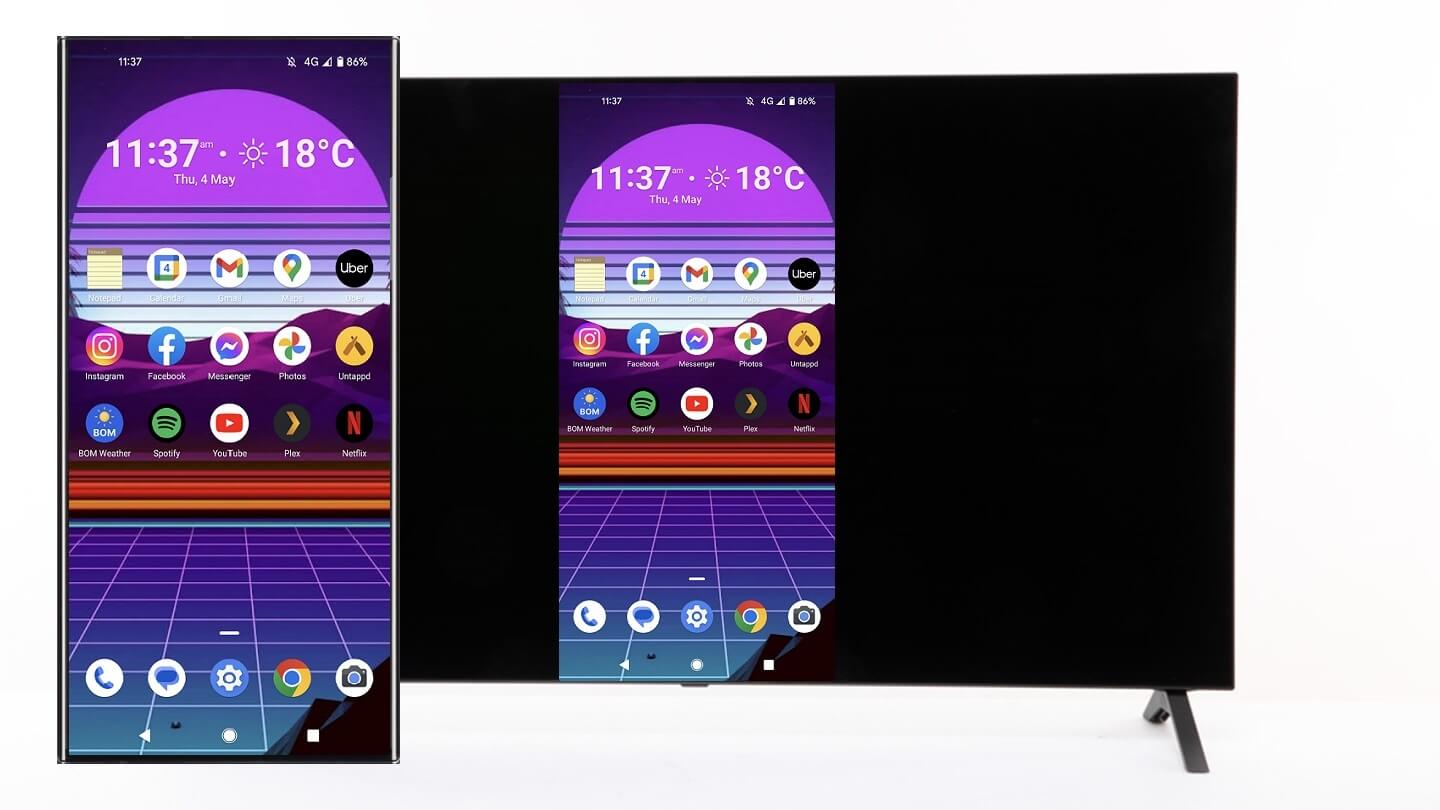
Third-party apps
There are plenty of third-party alternatives that aim to fill the gap left by Miracast. They either form the same kind of direct connection or, much more commonly, swing via the router to simulate what Miracast has to offer. This isn’t necessarily a bad thing, mind you, but it’s worth noting the differences.
We can’t recommend any particular apps as we aren’t in a position to try them all. But you will need to install your app of choice on both devices for the connection to work, so make sure it’s available for your TV before buying, if payment is required.
How does casting work?
Google’s casting protocol lets you share music, videos and photos from a smartphone or tablet to another compatible device, such as a TV. It’s more sophisticated than mirroring as the content is optimised for presentation on your television. Each device needs to be on the same Wi-Fi network to communicate, or to be ‘discoverable’ as casting calls it. It’s supported by Android and iOS devices.
This works in two ways:
- Via apps: When an app is installed on your smartphone/tablet and another device, you can connect the two, which essentially turns your smartphone into a remote control for that particular app.
- Via the operating system (OS): Some devices have casting support built into the OS which allows you to bypass any restrictions or limitations of some apps. For example, YouTube doesn’t let you cast audio without a subscription, but you can get around this with a Google Pixel, which has an OS level option to cast any audio currently playing on the phone.
Casting doesn’t need to be built into the operating system to work, just the app software. You can connect to apps on your TV with this feature, even if the TV itself doesn’t support casting.
What does it do?
This depends on where you source your media. If you’re casting via a service like Netflix or Spotify, then your phone tells the app to pull content directly from their servers to your TV. In this case the phone is basically a remote control.

If you have movies, photos or songs on your phone, then casting will send that content directly from your phone to the other device. You can also cast media that’s stored on other devices in your house, such as a computer or NAS drive (home server). This is where media management software such as PLEX comes in handy. In either case, the receiving device does the legwork.
The device that’s storing the data needs to be turned on for casting to work. So if you use a home media management app on your phone to tell your computer to cast a movie to your TV, the computer needs to stay turned on until you’re done.
What are the pros and cons?
The best thing about casting is, once it starts, you can continue to use your phone for other things. You don’t need to keep the apps open for it to work. Also, if the phone stops casting but the media is stored on another device, then it will keep playing.
As for the cons? There aren’t really any to speak of as casting support is so widespread. You may find some devices or apps that don’t support it, but there are easy workarounds for that such as a media streaming device or alternate app. Initial connectivity can be a bit hit-and-miss from time to time as well, depending on the device.
How to cast to a TV
From an app
This is really easy. First, make sure your smartphone and other device are connected to the same network. Next, open the app you want to cast to on your TV, followed by your smartphone, then find the casting icon. It’s a small rectangle with the Wi-Fi symbol (three curved waves) coming in from the bottom left corner, usually placed in the top right corner of the screen.
Tap it to open a list of discoverable devices on your network. Select the device you want to cast to and tap to form the connection. Video or audio will be available depending on the app and content. To disconnect, tap the casting icon again.
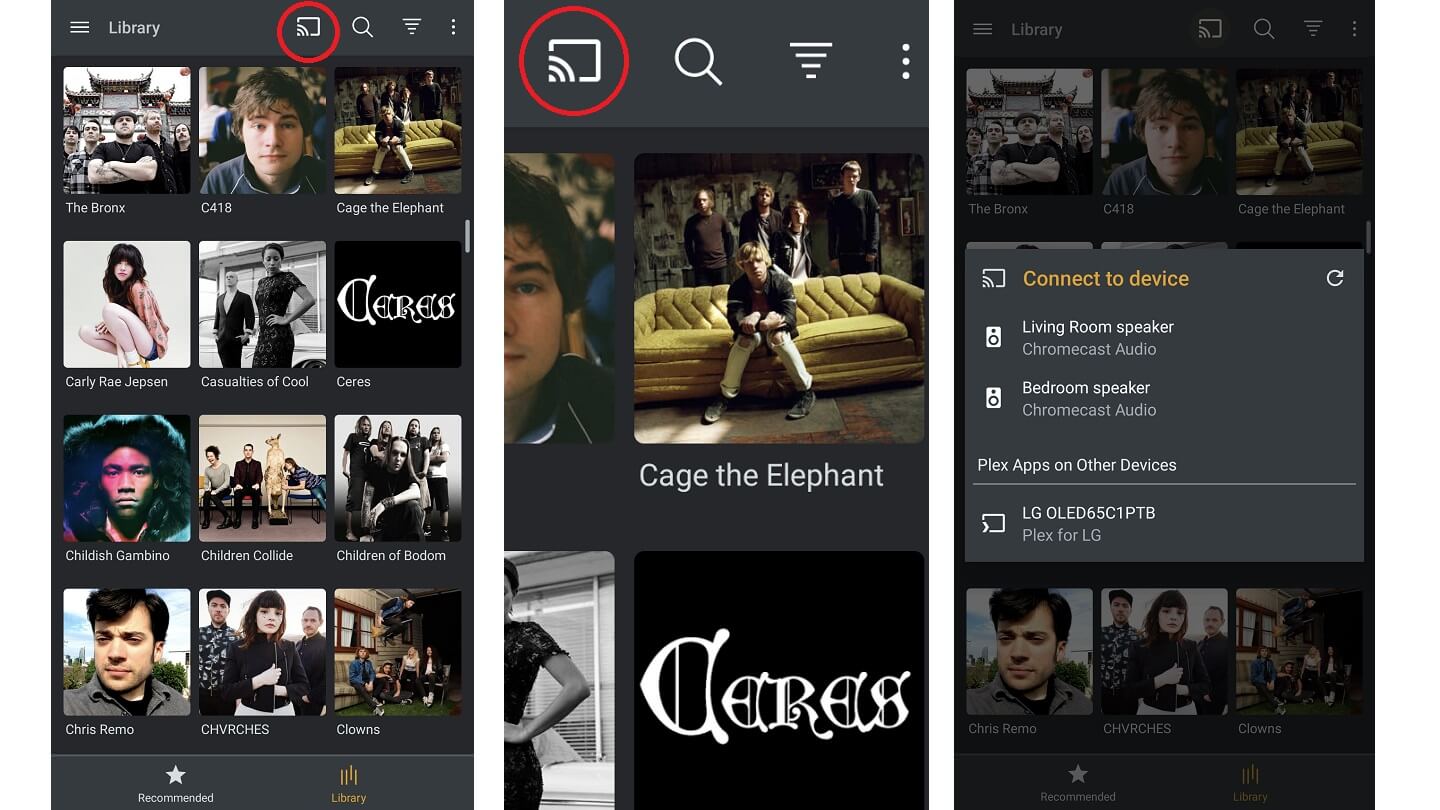
From the operating system
Most smartphones can also cast audio directly via the default smart home app that’s included with the operating system. This will vary depending on the manufacturer and devices, but here’s an example of how to cast audio:
- Open the Google Home app, find a device that supports mirroring, such as a TV, then tap to open.
- Next, select Cast my audio followed by Cast audio then select Cast entire screen from the dropdown menu and tap Cast screen.
- To disconnect, return to the device menu in Google Home and tap Stop casting.
You can also cast specific apps by selecting Cast one app. This will open up a list of compatible apps for audio or video casting. But this is only necessary if you have a particular entertainment app that doesn’t support casting and these are few and far between. It’s otherwise just easier to cast directly from supported apps.
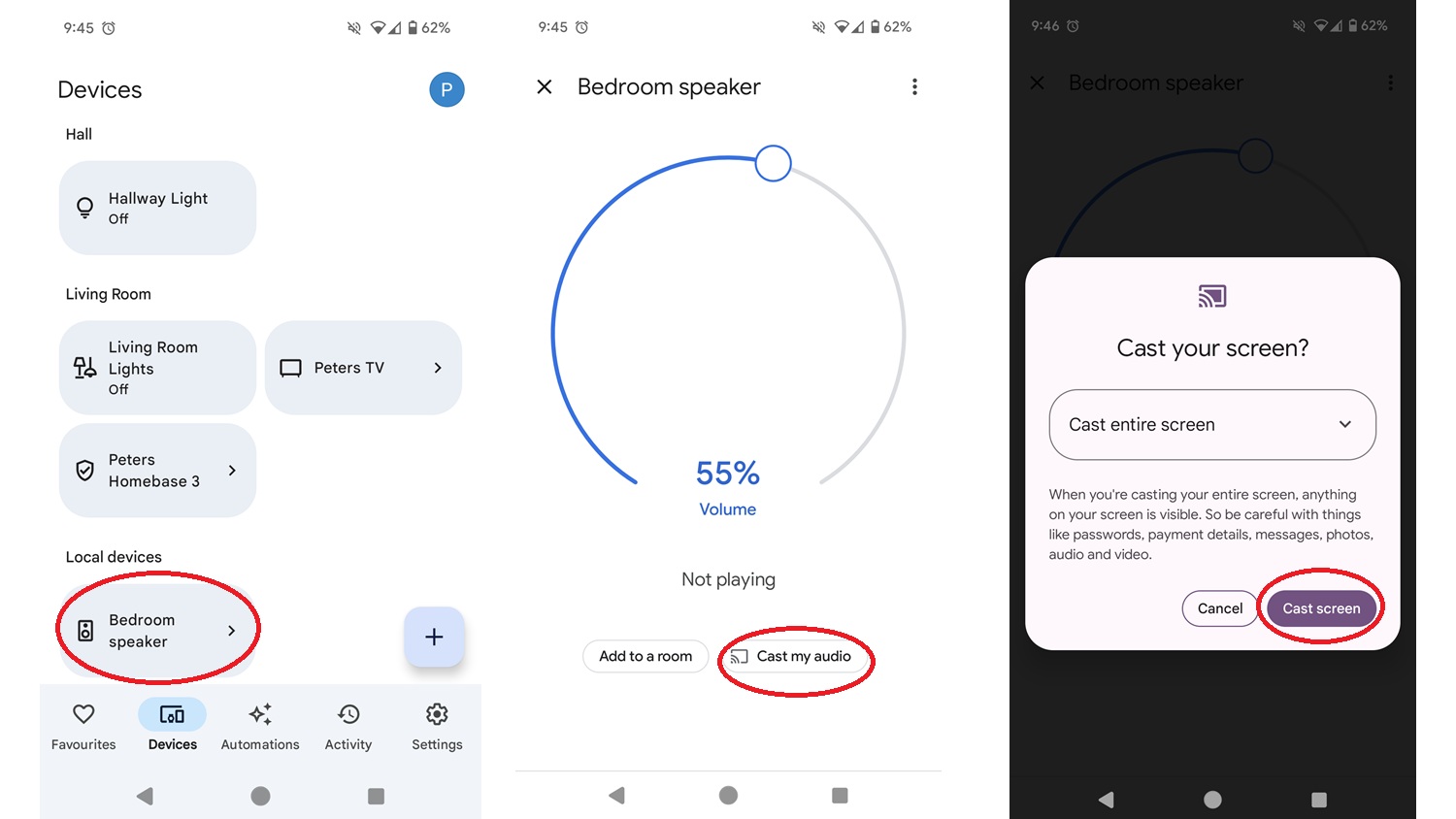
How does AirPlay work?
Apple’s proprietary protocol is basically a fancy form of mirroring within the brand’s ecosystem. Because it only works on select devices, it’s much more refined than most mirroring software as content can be optimised to look as good as possible.
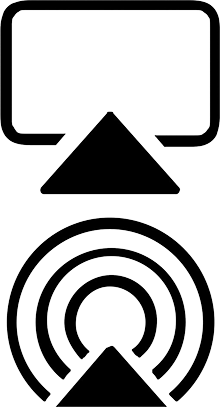
What are the pros and cons?
If you’re set up in the Apple ecosystem with multiple devices then you’re going to have next to no trouble getting AirPlay going. You don’t need to worry about getting the right apps or anything like that – the compatible software is all there and ready to go.
However, this does leave you with a limited range of devices to pick from. Some smart TVs have built-in AirPlay support, but most rely on an external device such as the Apple TV. Most video streaming apps either don’t (or no longer) support it either, but this isn’t really an issue now that iPhones and iPads allow casting. That is unless you’re trying to screencast, in which case you’re out of luck.
How to use AirPlay
Connect your iPhone or iPad to the same network as your smart TV or Apple TV. Open the Control Center – swipe down from the upper right corner of an iPhone X or later, or swipe up from the bottom of an iPhone 8 or earlier – to find the AirPlay icons.
The audio only icon is a triangle with three circular lines that look like a broadcast signal. The video icon is a triangle surrounded by a rectangle. AirPlay video is capable of streaming audio as well where applicable. Apps will automatically adjust the icon depending on the content they can send over AirPlay (e.g. music streaming apps like Spotify will only display the audio icon).
Select the AirPlay audio or video receiver you want from the list of compatible devices and follow any prompts that appear on your TV. To stop mirroring, open Control Center again, tap the audio or video icon depending on the content, then select stop.
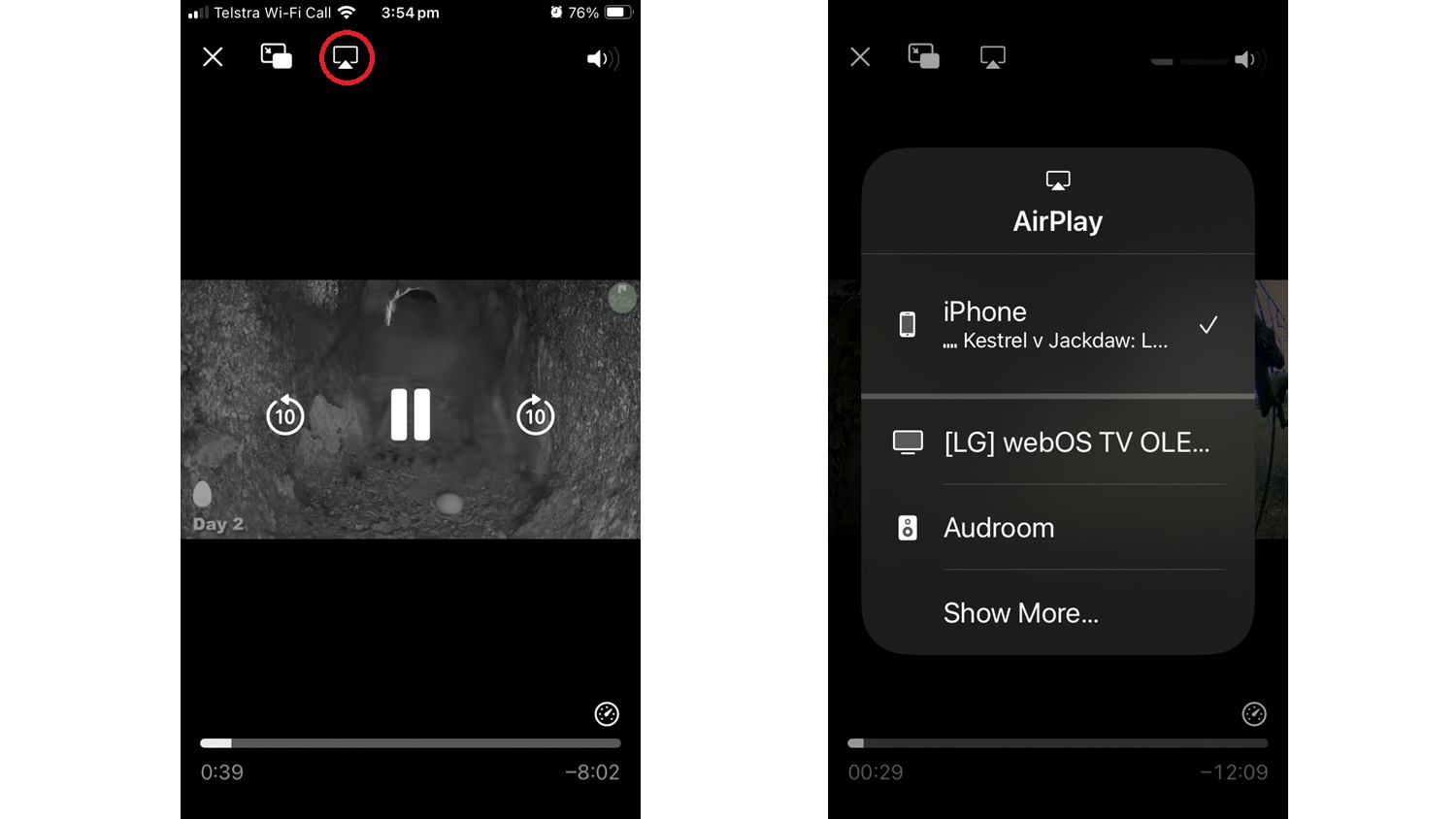
Do you need a Chromecast, Apple TV or Amazon Firestick?
Dongles and media streaming devices are an easy and affordable way to retroactively add casting or AirPlay support to older TVs. Instead of casting to your television, you can connect to a streaming device that’s plugged in via an HDMI port.
As well as casting, media streamers can extend support for streaming services that don’t work with your TV. For example, the Apple TV+ app can only be installed on TVs released in the past few years but you can still access it via an Apple TV unit if you own an older model. Most come with a remote control as well so you don’t need to use your smartphone for general navigation if you don’t want to.
Other types of casting
Proprietary alternatives
A few brands, manufacturers and service providers use their own casting protocols which are more or less the same as Google’s one. They operate through an app and need to be installed on a receiving device in order to work.
For music streaming, Spotify uses Spotify Connect while Denon and Marantz products have a media hub alternative of sorts called HEOS. These are designed to turn your phone into a remote while the protocol pulls media from servers – either externally or on your home network.

